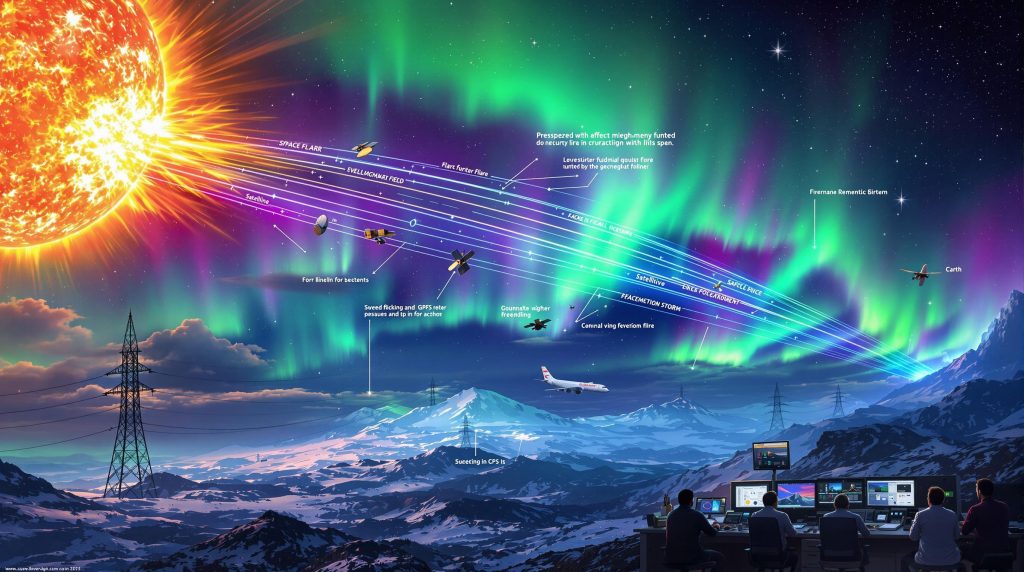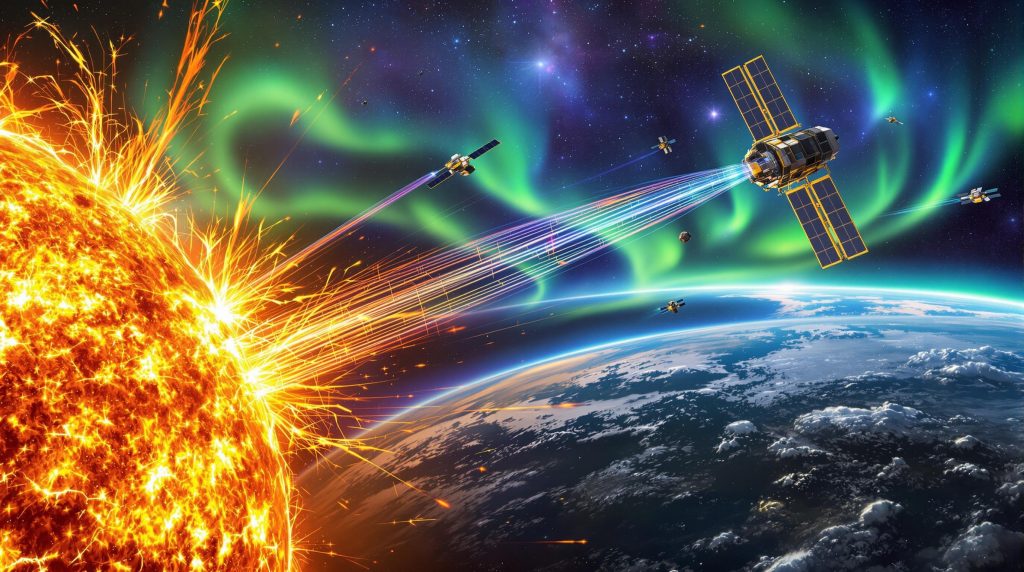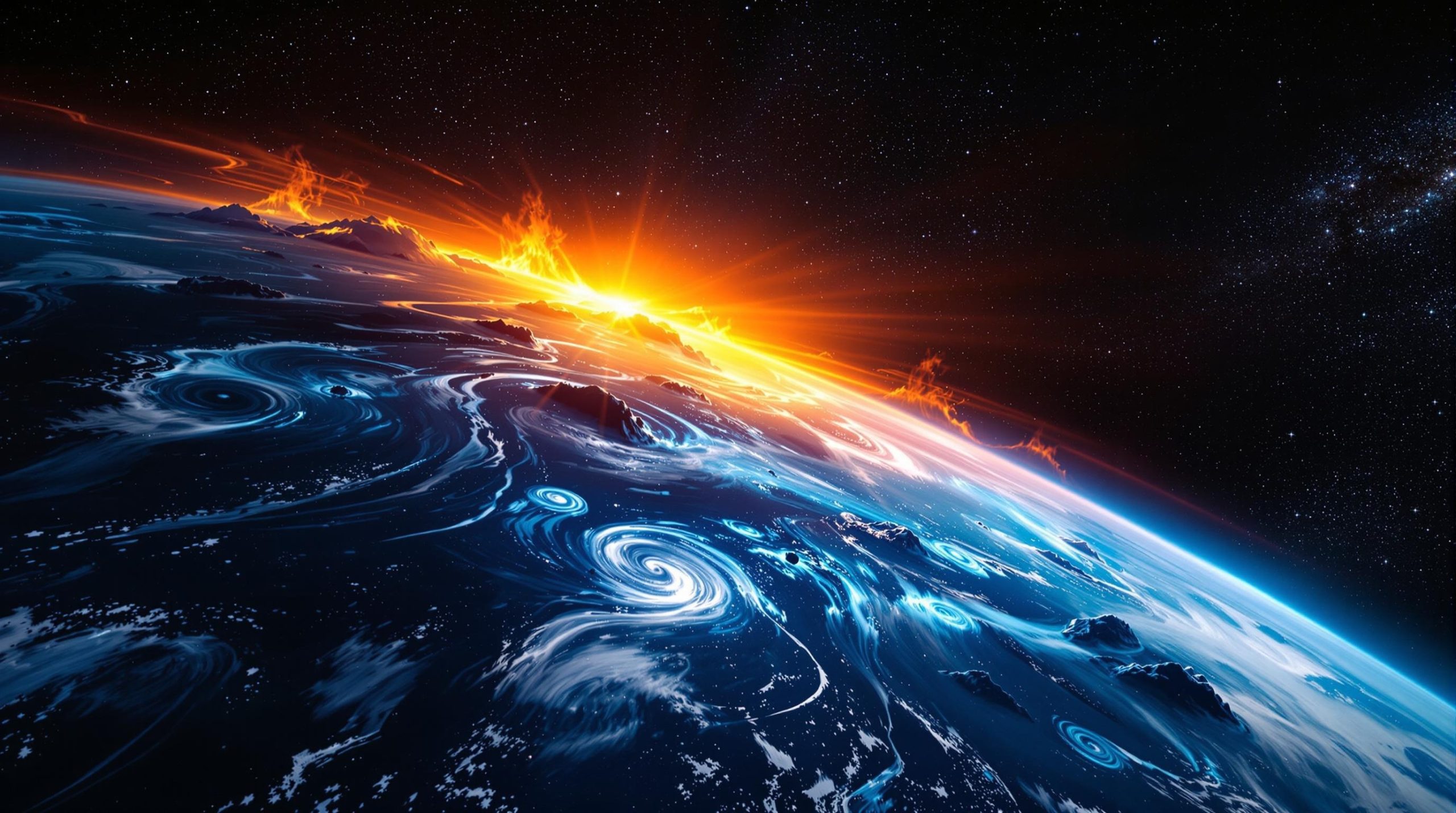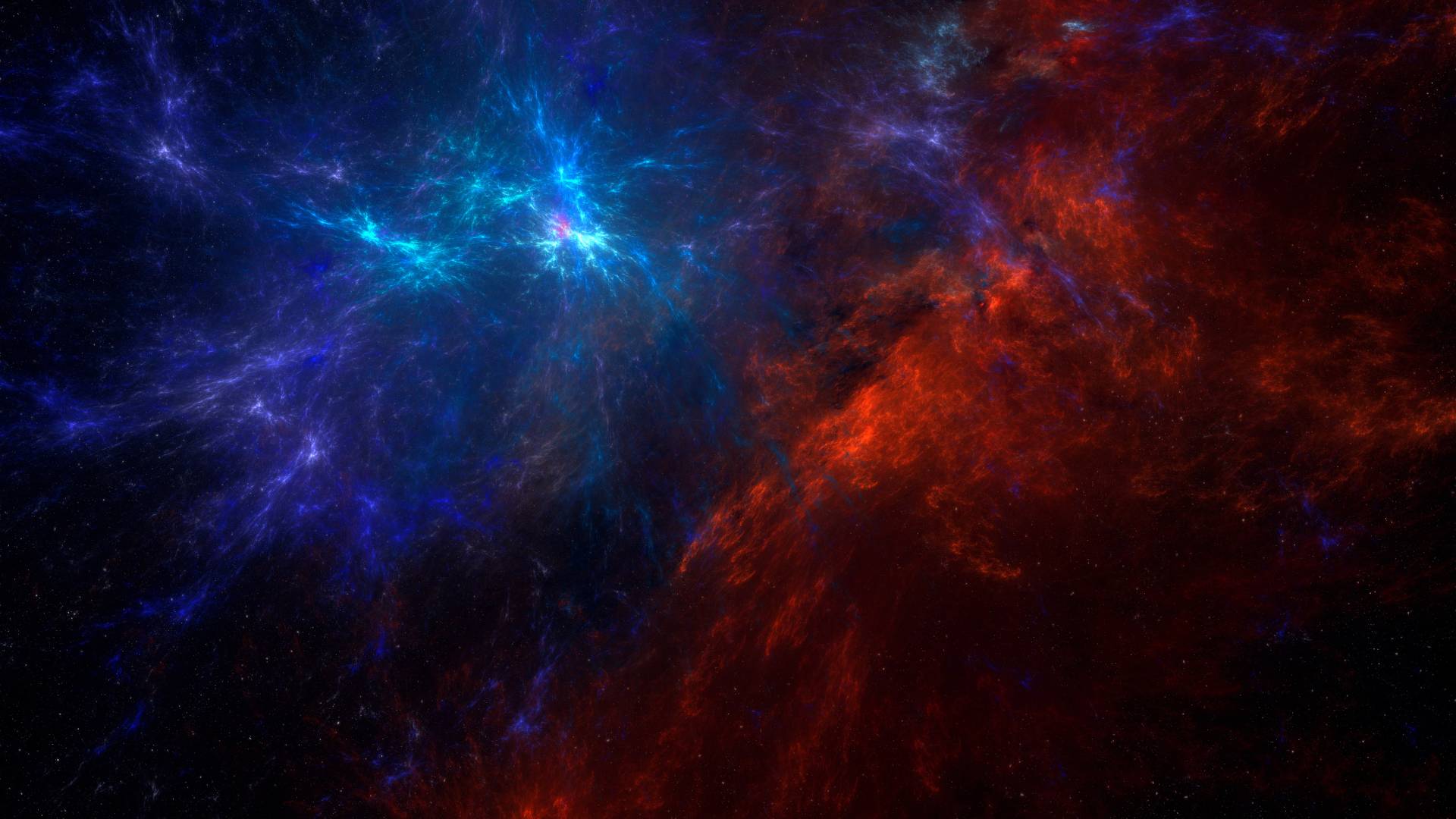Space weather might sound like a term from science fiction, but it refers to real and powerful phenomena caused by the Sun and cosmic activity. Solar flares, geomagnetic storms, and other solar events can have significant effects on Earth, impacting technology, health, and daily life. Let’s dive into how space weather influences us and why it’s crucial to monitor these celestial occurrences. Stay with Spaceyv
What Is Space Weather?
Space weather encompasses the conditions and phenomena in space caused by solar activity. The Sun emits charged particles, magnetic fields, and radiation into space, which can interact with Earth’s magnetic field and atmosphere. Key elements of space weather include:
- Solar Flares: Sudden bursts of energy and radiation from the Sun.
- Coronal Mass Ejections (CMEs): Massive ejections of plasma and magnetic fields from the Sun.
- Solar Wind: A continuous flow of charged particles from the Sun.

These phenomena can create disturbances in Earth’s magnetosphere and upper atmosphere, leading to what we call space weather events.
Impacts of Space Weather on Earth
1. Disruption of Communication Systems
Solar storms can interfere with radio waves used for communication.
- Aviation Communication: High-frequency radio signals used by pilots and air traffic control can be disrupted during solar flares.
- Satellite Communication: Signals used for television, internet, and GPS systems can experience interference, affecting navigation and daily connectivity.
2. Power Grid Vulnerabilities
Geomagnetic storms, caused by CMEs, can induce electric currents in power grids.
- These currents can overload transformers, causing blackouts or even permanent damage to infrastructure.
- The 1989 Quebec blackout in Canada was a direct result of a geomagnetic storm.
3. Satellite Damage and Spacecraft Hazards
Satellites play a critical role in modern life, from weather forecasting to global communication.
- Solar radiation can degrade satellite components, reducing their lifespan.
- Satellites may experience orbital drift or lose functionality during intense solar storms.
4. Health Risks for Astronauts
Space weather poses significant challenges for astronauts in space.
- Exposure to high-energy radiation during solar storms increases the risk of radiation sickness and long-term health issues, such as cancer.
- Space agencies monitor solar activity closely to protect astronauts on missions, including those aboard the International Space Station (ISS).
5. Impact on Human Health on Earth
While Earth’s atmosphere provides substantial protection from solar radiation, extreme solar storms can have indirect effects.
- People in high-latitude regions may experience increased radiation exposure during air travel due to disruptions in Earth’s magnetic field.
- Some studies suggest that geomagnetic disturbances might influence biological processes, such as sleep patterns or heart health.
6. Auroras: The Beautiful Side
On a positive note, space weather creates stunning auroras, such as the Northern and Southern Lights.
- These colorful displays occur when solar particles interact with Earth’s magnetic field and atmosphere.
- Auroras are most visible near the poles during heightened solar activity.
The Importance of Space Weather Monitoring
Space weather monitoring plays a vital role in safeguarding Earth’s infrastructure, human activities, and scientific endeavors. Here’s a closer look at why keeping an eye on space weather is essential:

1. Protecting Satellites and Spacecraft
- Satellites in Danger: Space weather events, like solar flares and coronal mass ejections (CMEs), can damage the sensitive electronics of satellites. This could result in loss of functionality or shortened lifespans.
- Mission Safety: Spacecraft traveling beyond Earth’s magnetic shield, such as those heading to the Moon or Mars, face increased radiation risks. Monitoring solar activity helps space agencies like NASA and ESA plan missions around periods of lower solar activity.
2. Safeguarding Power Grids
- Geomagnetic Storms: CMEs can induce powerful currents in Earth’s crust and electrical grids. These geomagnetic-induced currents can overload transformers, leading to blackouts or permanent damage.
- Historical Examples: The 1989 geomagnetic storm caused a nine-hour power outage in Quebec, affecting millions of people. Monitoring space weather helps power companies implement protective measures during such events.
3. Ensuring Communication and Navigation
- Radio Communication: Solar flares can disrupt high-frequency (HF) radio signals, critical for aviation, maritime operations, and emergency services.
- GPS Accuracy: Geomagnetic storms can degrade GPS signals, causing errors in navigation and timing systems, which are essential for transportation, military, and financial sectors.
4. Aviation and Passenger Safety
- Radiation Exposure: Solar storms increase radiation levels at high altitudes, especially near the poles. Airlines can use space weather forecasts to reroute flights to minimize exposure for passengers and crew.
- Communication Interruptions: During intense solar activity, HF radio communication used on transpolar flights can be disrupted, making space weather monitoring critical for operational safety.
5. Protecting Human Life in Space
- Astronaut Safety: Astronauts aboard the International Space Station (ISS) or on deep-space missions are vulnerable to high-energy solar radiation during solar storms.
- Preventive Measures: Space weather monitoring enables agencies to issue alerts and instruct astronauts to take shelter in shielded areas of the spacecraft.
6. Improving Scientific Research
- Space weather studies contribute to understanding the Sun’s behavior and its impact on our solar system.
- Advanced knowledge aids in predicting long-term solar activity cycles, which is critical for preparing Earth’s infrastructure for future challenges.
7. Enhancing Global Preparedness
- Early Warning Systems: Agencies like NOAA’s Space Weather Prediction Center (SWPC) and NASA’s heliophysics division provide real-time space weather alerts.
- International Collaboration: Monitoring efforts from multiple nations contribute to a comprehensive understanding of space weather, enabling coordinated responses to global threats.
8. Ensuring Economic Stability
- Space weather disruptions can cost billions in damages to power grids, satellites, and communication systems. Monitoring minimizes economic losses by reducing downtime and repair costs.
Preparing for the Future
As our reliance on technology grows, the importance of understanding and preparing for space weather becomes paramount. Scientists and governments are investing in advanced systems to monitor solar activity and predict space weather events. Projects like the Parker Solar Probe and the Solar Orbiter aim to deepen our knowledge of the Sun and its behavior, ensuring a safer and more resilient Earth.
Conclusion
Space weather might originate millions of miles away, but its effects are felt on Earth every day. From powering breathtaking auroras to challenging our communication systems, space weather is a reminder of our connection to the cosmos. By investing in research and preparedness, we can mitigate its risks and harness its beauty to inspire awe and wonder.
References
NASA’s Space Weather Resources
National Oceanic and Atmospheric Administration (NOAA) Space Weather Prediction Center



